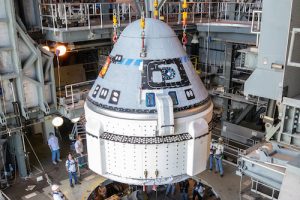Interstellar Mapping and Acceleration Probe:

NASA launched the Interstellar Mapping and Acceleration Probe (IMAP) to show how solar particles are energised and shield us.
- Interstellar Mapping and Acceleration Probe goal is to map the heliosphere’s boundary, trace energetic particles, and improve space weather forecasting.
- The heliosphere is a huge bubble created by the Sun’s wind that encapsulates our entire solar system.
- IMAP will support real-time observations of the solar wind and energetic particles, which can produce hazardous conditions in the space environment near Earth.
- It is situated at the first Earth-Sun Lagrange point (L1), at around one million miles from Earth toward the Sun.
- IMAP will also send data in near real-time to help scientists monitor space weather conditions.
- Components of Interstellar Mapping and Acceleration Probe
- IMAP is equipped with 10 scientific instruments, each designed to detect different types of particles or phenomena in space.
- Some of them are energetic neutral-atom detectors (IMAP-Lo, IMAP-Hi, IMAP-Ultra), which capture neutral atoms that were once charged ions but were changed by acquiring electrons.
- Other instruments detect charged particles directly, magnetic fields, interstellar dust, and solar-wind structures.
- The Interstellar Mapping and Acceleration Probe will:
- Uncover fundamental physics at scales both tiny and immense.
- Improve forecasting of solar wind disturbances and particle radiation hazards from space.
- Draw a picture of our nearby galactic neighborhood.
- Help determine some of the basic cosmic building materials of the universe.
- Increase understanding of how the heliosphere shields life in the solar system from cosmic rays.




